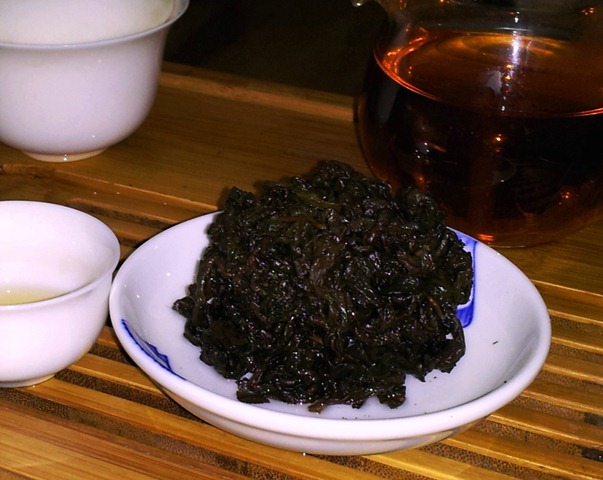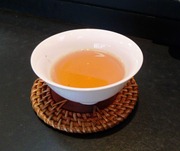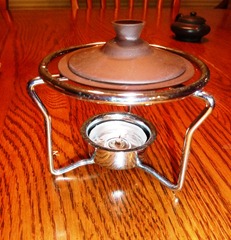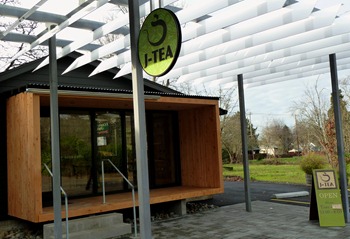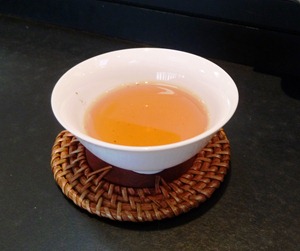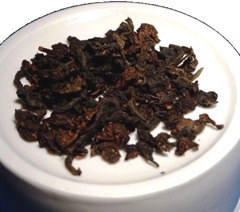I finally finished a full inventory of my tea last week. The result? Not enough! It’s been a couple of winters since I’ve been to Asia, so I definitely need to re-stock on my next trip.
Although I have written about a few of the more well-known tea retailers that I’ve visited, there are many more that I have yet to mention. Hole in the wall places, previously well-known tea makers, beautiful teahouses - the variety is astounding. I endeavor to visit new places on each of my trips and I make sure to always learn something from each retailer that I go to, and to pay them tuition by way of a purchase. My inventory includes hundreds of samples from dozens of shops. Most of them have a memorable back-story, some of which I recount with great pleasure.
______________________________________________
The Central district is the financial and nightlife center of Hong Kong, its “Downtown.” About 10 years ago, my friends and I would frequent the awesome-value joints there (not common, considering some of the hottest & priciest joints are there). We’d “treat” ourselves to such delights as a sizzling hot plate steak meal, complete with soup, veggies, rice, a cold drink and dessert, all for $5. Bellies full, we’d waddle a few blocks up the way to the drinking district and get $.70 happy hour beers, after which, we’d stumble over to some late-night joint for a snack. Good times.
Years after, I still visit Central every time I’m in Hong Kong, and as my love of tea has deepened, so too has that area become more interesting. The adjacent districts of Sheung Wan and Western to the west, for example, still have several old tea stores, while some of the snazzier teahouses can be found in the Admiralty and Causeway Bay districts to the east.
The delightful nature of serendipity has guided me to cherished memories time and again, bringing me to the doorway of a none-too-special shopping arcade several years ago. On my way back to Central from my friend’s place, a sudden and unexpectedly heavy rain shower - common in sub-tropical climates - led me to seek shelter in the foyer of this non-descript building. As I reached behind me to grab a tissue out of my pack, a sign on the wall pointed up. On it was a stylized teapot with a clever pun on the word for “bottle,” alluding to a tea vessel. A warm room and a cup of tea would be excellent for a stupid me that was too thoughtless to carry an umbrella during the rainy season.
Following the sign, I came upon upon a small store and walked inside. Tables and shelves were stacked with all manner of teapot. Many had detailed info placards like the collector sets that my dad had bought in Beijing, but most others just had a simple price label. Some of the pots were very expensive, and they just sat there on tables and shelves of varying heights, open to being touched and admired. I dared not touch anything out of fear of breaking something that could cost anywhere between $50 to $7,000+. I had never seen so many different types of teapots in one place before, the diversity of colors, shapes, textures and sizes was extraordinary.
The proprietor sat near the entrance of the store with a friend (who turned out to be his “student”), examining a few pots and drinking tea. Transfixed by the wonders before me, his call brought me back to the present. “Do you like drinking tea?” he asked. His student looked up and smiled. “Come join us, we are having a Tie Guan Yin.”
Just my luck, my favorite tea. I walked over, looked into the cup before me and saw an amber-colored brew. “Thanks so much, traditional Guan Yin, just my type.” I took a sip and found much comfort in the warm brew. “I am very impressed, you have so many teapots, I never knew of such a store as yours.”
The owner chuckled with amusement. A long-time collector of pots, he admitted that he was no tea expert, more of a teapot “geek.” He found it amusing that a foreign-born Chinese person like me was fond of tea, no less particularly fond of traditional-style Guan Yin. He mentioned that he sold mediocre tea best suited for everyday drinking and for seasoning teapots with. He explained that he had pots to suit all six types of tea and that his most expensive pots were priced because of their craftsmanship, history or aesthetics, not necessarily because of their functionality. I recall that we chatted about his home village, his interest in tea culture and his favorite teas. His student taught me a few things about the sound of teapots and basic differences in the clays, and we had a nice time drinking some of his brews. He invited me to return again later in the week, promising to bring an aged tea from home to share with me. I offered to buy a small bag of oolong from him, but he gave me a sample of it instead and told me to save my money for tea that was more suitable for my tastes. What a kind man and kindred spirit, I remember thinking.
As I was leaving, I wanted to ask him why his signs weren’t bigger as to attract more customers, but he didn’t seem like the type to really need the sales. Neither was the store well-suited for foot traffic from window-shopper types. I don’t know why I didn’t end up visiting that store again, although I did leave Hong Kong less than 48 hours after and I probably just ran out of time. I remember thinking to myself that he had a great thing going, to be able to share his passion with like-minded collectors without the financial pressures that face most retailers. Even now, the recollection of the shop and its owner bring me joyful sentiments.
Who knows if my presumed background of this unique storefront and its owner is accurate, but as I held the foil sample bag last week, I couldn’t help but to wonder when I would have my own little space to share my trinkets with that that fate brings my way.
If not for the small sample bag that I uncovered, this experience may have remained a pleasant but dormant one left in the heap of my brain’s “to sort before I die” memories. Now, it’s been moved to the stack of “found treasure” experiences, with a part 2 that I hope to add in the not-too-distant future. Maybe he’ll even have a little chunk of nice pu’er in his shop when I visit!
Drink good tea and enrich your life.
